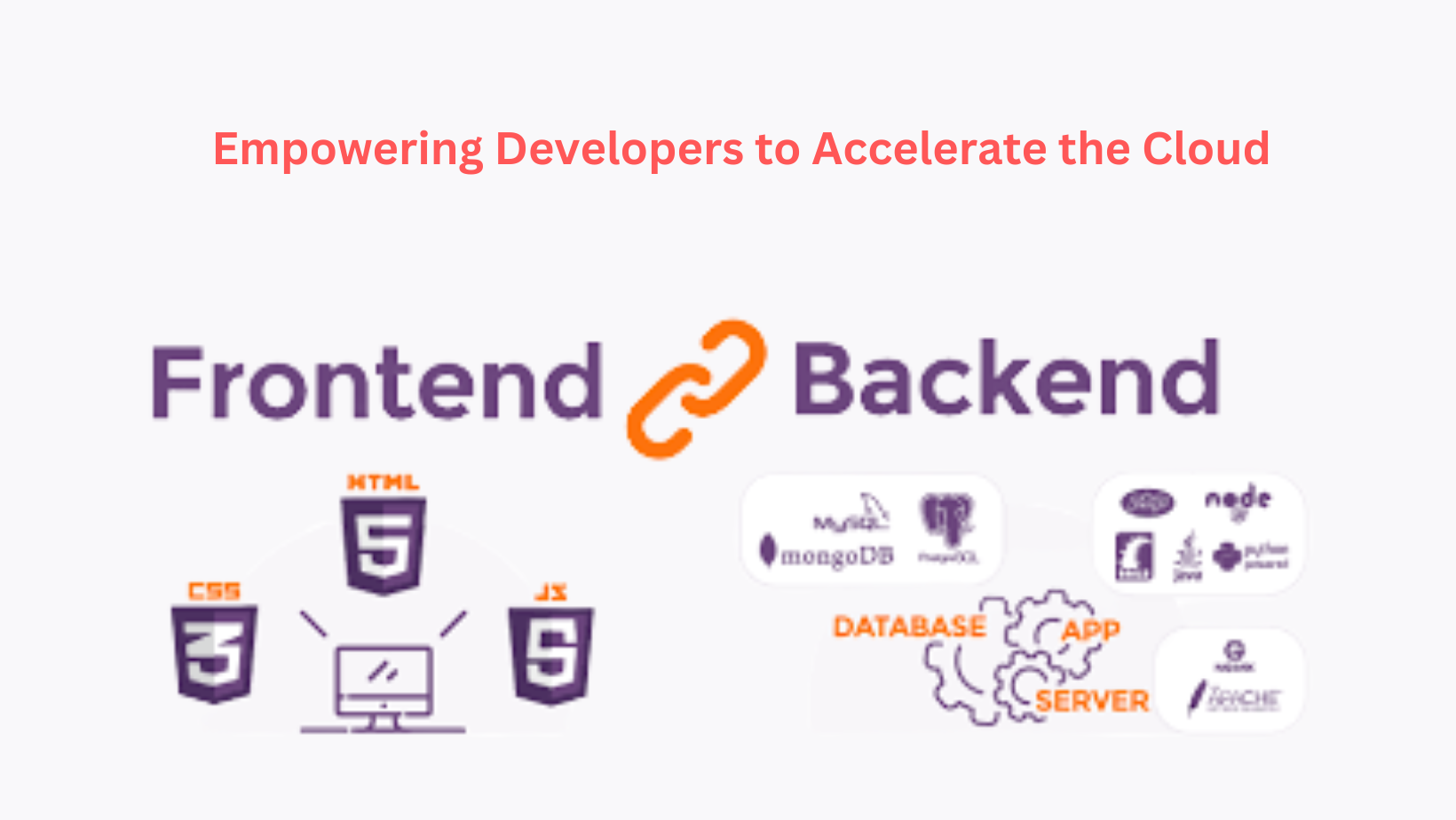Java Full Stack is not only powerful but also secure. It offers comprehensive security features, such as authentication mechanisms for users accessing its data via APIs or user interfaces (UIs). Moreover, its high availability ensures that cloud-hosted applications remain operational even in the event of server failures or maintenance work. This helps reduce development costs by automating certain tasks like application deployment and development cycles without compromising on quality or performance. In short, Java Full Stack provides developers with an integrated software development platform used to build secure yet flexible applications at an affordable price point!
Empowering Developers to Accelerate the Cloud
As technology advances, developers are looking for ways to accelerate the cloud. Java Full Stack Cloud Computing (FSCC) is one way to empower developers and provide them with more scalability and flexibility. FSCC leverages the power of Java for cloud-native applications, simplifies development and management, and optimizes resources to reduce costs while increasing scalability. At Kelly Technologies, we provide comprehensive Java Full Stack Training in Hyderabad to help students acquire the right skillset.
With FSCC, developers can unlock speed and agility by quickly scaling up or down as needed. This helps reduce time to market with the rapid delivery of secure applications deployed in a fast and reliable environment. Additionally, existing systems can integrate with modern cloud architectures while connecting quickly to cloud services and databases.
The benefits of FSCC don’t stop there; it also increases the speed of development projects by allowing multiple languages to be developed in the cloud simultaneously. Data can be accessed rapidly using cloud services, which allows for faster problem-solving through its automation capabilities, along with more secure data storage than traditional methods offer. With Java Full Stack Cloud Computing, developers are empowered with greater control over their projects, allowing them to create enterprise applications with higher performance, scalability, and reliability – all at a lower cost than other solutions offer!
How to Get Started With Java Full Stack Cloud Computing?
Java Full Stack Cloud Computing is quickly becoming an essential technology for businesses looking to maximize efficiency and profitability. It offers a wide range of benefits, from cost savings to increased security measures. But before reaping the rewards of Java Full Stack Cloud Computing, one needs to know how to get started.
First, it’s important to understand what Java Full Stack Cloud Computing is and how it can benefit a business. Essentially, it involves leveraging cloud platforms such as Amazon Web Services (AWS) or Microsoft Azure to host applications and services via the internet. This computing type allows for scalability and flexibility that traditional on-premise solutions simply cannot match. Furthermore, cloud solutions are often cheaper than on-premise ones due to not having the overhead associated with hardware or software maintenance costs.
Once a basic understanding of what Java Full Stack Cloud Computing can provide a business is acquired, one needs to identify the best platform for specific needs. Familiarize oneself with all components involved in setting up this type of environment, including databases, web servers, storage systems, etc., as well as any security measures that must be taken into account when deploying applications in this manner, such as data encryption algorithms like AES 128/256-bit encryption protocol or HMAC authentication protocols like SHA-256/512 Hash Message Authentication Code (HMAC).
Additionally, there are numerous tools and frameworks available that help developers create powerful applications quickly using Java Full Stack Cloud computing technologies, such as Spring Boot and Grails frameworks, which provide rapid application development capabilities; Apache Cassandra database, which offers high availability; Hadoop Distributed File System (HDFS), which helps manage large datasets across multiple nodes; Kubernetes container orchestration platform, which allows for easy deployment onto any cloud infrastructure, plus many more options designed specifically to work within a cloud environment. Furthermore, investing in an experienced partner who specializes in designing customized solutions tailored specifically to meet business needs can go a long way towards ensuring success when implementing this solution into production use cases.
Technologies Needed for Successful Java Full Stack Cloud Computing
Java Full Stack cloud computing is quickly becoming the preferred technology stack for modern application development and deployment. With its scalability, portability, and cost savings capabilities, this technology is revolutionizing how businesses can develop applications faster and more efficiently. In this article, we will explore the technologies needed for successful Java Full Stack cloud computing, as well as the benefits that can be realized by leveraging this powerful technology in your organization.
First of all, it is important to understand what Java Full Stack cloud computing is. This type of architecture combines a comprehensive development environment – featuring an Integrated Development Environment (IDE), Software Development Kit (SDK), Java Virtual Machine (JVM), and more – with the power of cloud computing platforms such as Amazon Web Services (AWS), Microsoft Azure, Google Cloud Platform (GCP) or IBM Cloud. This combination allows developers to deploy applications and services in an automated fashion with tools like Jenkins or Chef while utilizing Containerization technologies like Docker to ensure scalability and portability across all environments. Additionally, Microservices architectures can be deployed using Kubernetes for further optimization of performance at scale.
In conclusion, those looking to transition their existing workloads onto the public clouds should consider leveraging Java Full Stack cloud computing technologies due to their many advantages over traditional methods such as scalability and portability across multiple platforms, along with cost savings capabilities enabled by automated deployments through containerization solutions like Docker, combined with microservices architectures deployed using Kubernetes, which facilitate orchestration at scale. This enables a secure environment through API Gateways and Identity Access Management solutions, while accelerating development cycles through DevOps best practices, in addition to CI/CD pipelines based on agile engineering frameworks. This makes it easier than ever before for organizations of any size to make use of these powerful technologies, ensuring success moving forward into the future. The article in Tefwins must have given you a clear idea of this concept.


